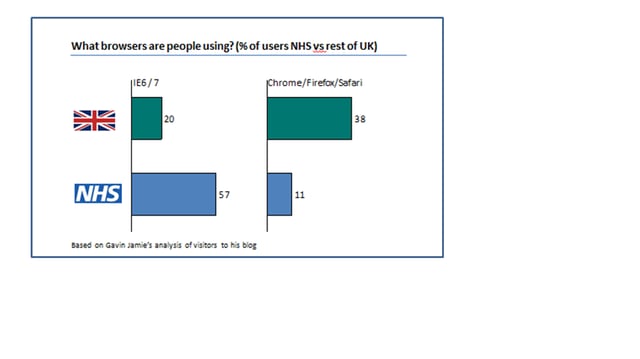Why the NHS needs to upgrade its systems so the rest of us can innovate
 It’s times like these where I feel like the only logical course of action is to bang my head against the wall. Desperate? Maybe, but often it feels utterly futile trying to combat the elephant in the room: the NHS’ insistence on using outdated systems for their day-to-day work.
It’s times like these where I feel like the only logical course of action is to bang my head against the wall. Desperate? Maybe, but often it feels utterly futile trying to combat the elephant in the room: the NHS’ insistence on using outdated systems for their day-to-day work.
We recently updated the Network Locum (now Lantum) site with a fresh design and user-interface. For a company such as ours the work of designer Peter Larkin is hugely important because we have to stay relevant to current technology trends. Ease of use and functionality are essential to making us effective at delivering our service.
However when we receive calls from Practice Managers telling us that our site keeps ‘breaking’ it is a major cause for concern: a lot of time and effort went into the site and the feedback from locums has been extremely positive.
Unfortunately the blame doesn’t lie in our hands. While we have been striving to stay at the front of the curve when it comes to using modern technology, we’re dealing with people using browsers that are up to 13 years old. Dated browsers, like Internet Explorer 6 and 7, are unable to execute widely used modern browser components like HTML5 and javascript. The job calendar page on Network Locum (now Lantum), which allows Practice Managers to post jobs online, is completely inoperable on IE6 and cripplingly slow on IE7.
 This is based on Gavin Jamie's sample analysis
This is based on Gavin Jamie's sample analysis
Our lead developer Craig stresses, “Older web browsers are less secure, slower, and have less features than modern browsers. If our customers use them, they can’t make the most of the site.”
So what choices do we have? Either we commit a large amount of resources making the site compatible with outmoded users or we try and get our customers to update their systems. Sensibly we chose the latter, although the prospect of selling two products to potential clients is slightly more difficult but in the long term it will make their lives easier.
Our own naivety led us to believe that the use of old browsers was a choice by GP practices, but the truth is that many practices want to upgrade but are being held back simply because necessary applications such as Choose and Book will not work with newer browsers.
These sentiments were echoed by Kenny Kennington, IT Operations Manager at Torbay & Southern Devon Health and Care NHS Trust. He said, “It is the central systems [like Choose and Book] we all have to use that are holding back any progress.” It has to be a cause for concern if IT specialists within the NHS are aware of issues but unable to enact changes.
Companies like ours, whose aim is to help streamline the mammoth task the NHS has, are being stunted by the technological stagnation festering in the administrative branch of the NHS. It makes our lives difficult, but far more importantly it is holding back our customers from providing the best service they possibly can to the people who matter most in this chain, patients.
Fortunately we’re not alone in our quest to get the NHS to join us in this decade. Handi Health and NHS Hack Day are two organisations trying to change the pace at which the NHS adopts new tech.
Dr Damian Rowland, an NHR Doctoral Research Fellow based at Leicester University and a member of the NHS Hack Day clan says, “efficiency saving in itself in moving from IE6/7 is huge.”
It’s important we keep pushing government organisations to embrace new technology because it is designed to make life easier for the people using it. Ed Bott, a prominent technology writer for ZDNet, was most damning with his criticism of companies who insist on using IE6, “Any IT professional who is still allowing IE6 to be used in a corporate setting is guilty of malpractice.” That was written in 2010, three years later and not much has changed in the NHS. After our experiences with how it affects our business I can’t help but feel Mr Bott is right.
Any comments please get in touch
Melissa.morris@lantum.com

